Menus
- New update for ER-6n
- Engine, ergonomics and driving experience
- Landing gear and cockpit
- Technical data Kawasaki ER-6n
- Comments MOTORCYCLE scoring
- Our conclusion
- Noticed
- MOTORCYCLE measurements
- The disguised ER-6f
- The competition
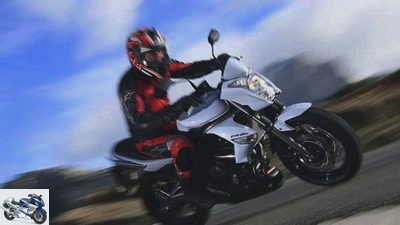
Gargolov
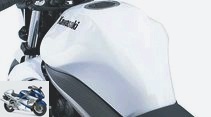
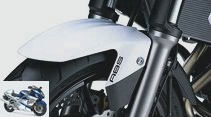
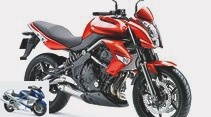
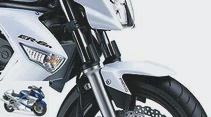
20th photos
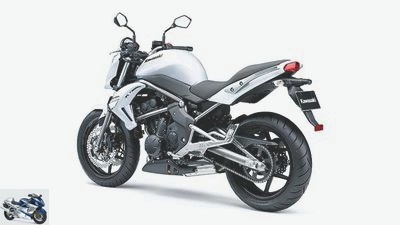
Kawasaki
1/20
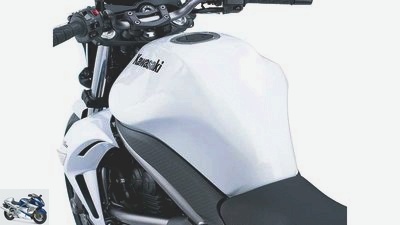
Kawasaki
2/20

Kawasaki
3/20
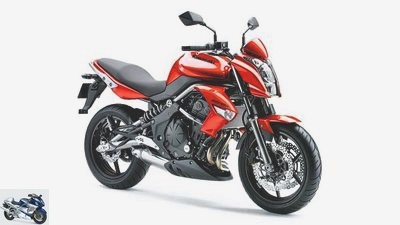
Kawasaki
4/20
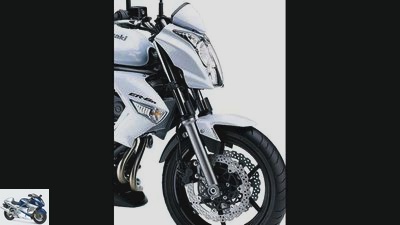
Kawasaki
5/20
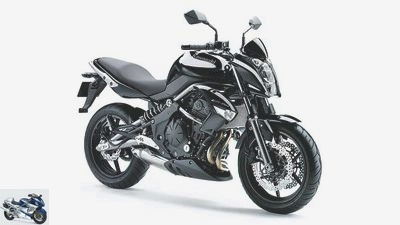
Kawasaki
6/20

Kawasaki
7/20
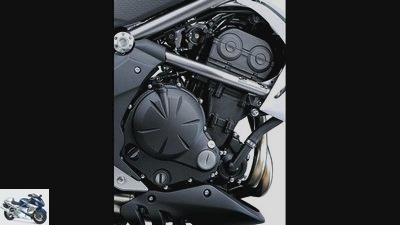
Kawasaki
8/20
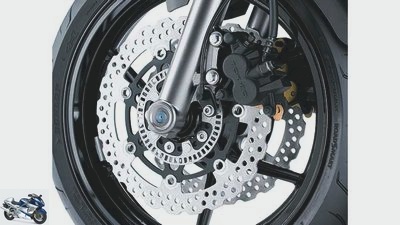
Kawasaki
9/20
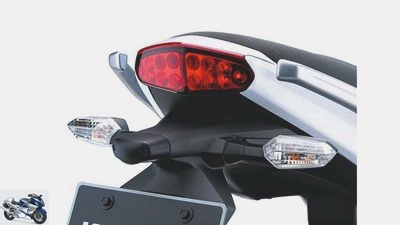
Kawasaki
10/20
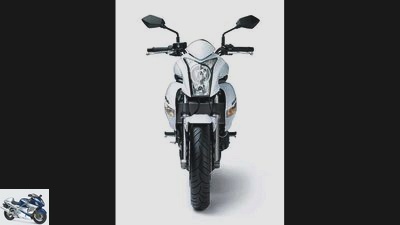
Kawasaki
11/20
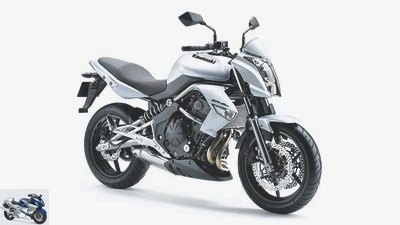
Kawasaki
12/20
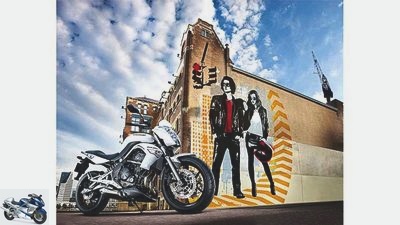
Kawasaki
13/20
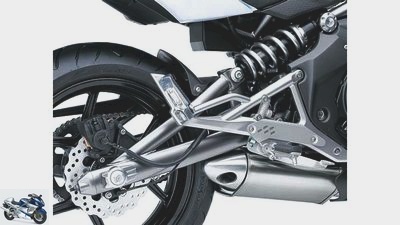
Kawasaki
14/20
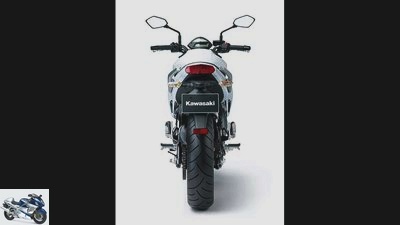
Kawasaki
15/20
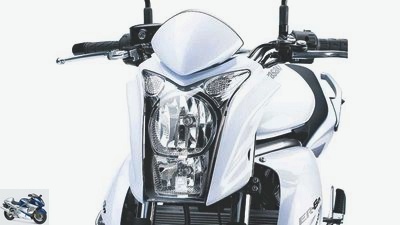
Kawasaki
16/20
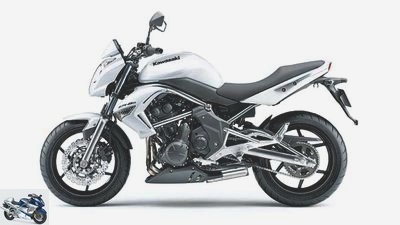
Kawasaki
17/20
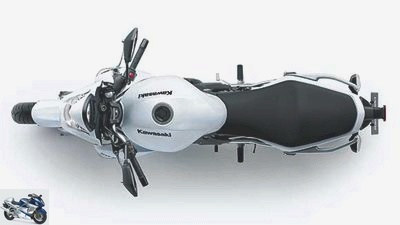
Kawasaki
18/20
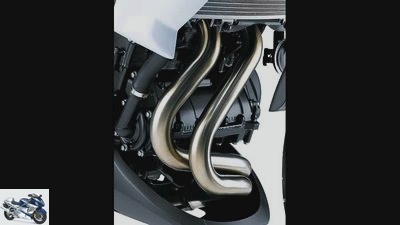
Kawasaki
19/20
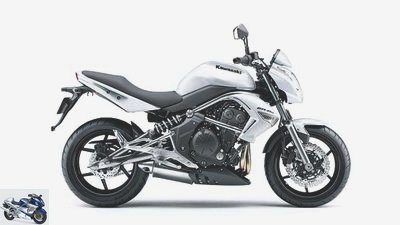
Kawasaki
20/20
Review Kawasaki ER-6n
New update for ER-6n
Few inconspicuous changes, but a lot of stylistic updates make the ER-6n a refreshingly new motorcycle. Is it better than its predecessor?
"never change a running system" ?? never change something that works. This is how you could casually translate this clever saying. But after three successful years ?? so far, the ER-6 has been sold more than 22,000 times worldwide as a faired and faired version ?? Kawasaki saw no need for a successor, but for a clearly visible model upgrade. This should make the ER-6n look new and fresh without affecting the recognition value of the striking naked bike. With careful optical retouching ?? apply a little here, take something away there ?? Kawasaki solved this problem well.
Buy complete article
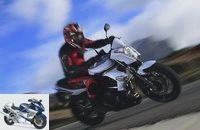
Review Kawasaki ER-6n
New update for ER-6n
ER-6n feel more comfortable because the cast aluminum handles, which were previously made of plastic, are mounted lower, lie better in the hand and are easier to grip. More stable footrest supports, a more compact rear section with a robust LED taillight, a slimmer license plate holder with lighting and splash guard as well as an effective mud flap on the swingarm are further changes that make the new ER-6n look fresher and more valuable. Also worth mentioning in this context are the more delicate rear indicators, a profiled instead of a rounded, smooth front fender and a more attractive chain adjustment mechanism.
Engine, ergonomics and driving experience
Kawasaki’s engineers saw little need for action with the drive. The 72 hp in-line twin-cylinder engine shines with a performance characteristic that satisfies both beginners and experienced, sporty motorcyclists alike. Even below 2000 rpm, the engine takes on the gas cleanly. It puts up with strolling, low-speed driving without complaint, without jerking or drawing attention to itself through annoying load change reactions, pulls through powerfully and demonstrates revving up to 11000 rpm and liveliness without ever being aggressive. An all-round talent, whose smooth, short and crisp shifting six-speed gearbox and well-metered clutch provide good support. Nevertheless, at Kawasaki, the mapping of the fuel injection was undertaken in order to achieve an even more uniform response behavior below 4000 rpm. An ER-6n from model year 2008 used for comparison should clarify the difference. In practice, however, a noticeable improvement can hardly be seen. The 300 honeycomb catalytic converter in the grumbling, cheekily styled stainless steel exhaust is also new. It should be lighter and more effective. The hope that with all these measures, from the new catalytic converter to the changed mapping, we could also continue to reduce consumption, which was already quite low, was not fulfilled. As before, the eight-valve twin consumes an average of 4.1 liters of fuel per 100 kilometers at moderate country road speeds. The old ER-6n got exactly the same value during the comparison run. What was noticeable on the other hand: In push mode, a slight slap could be heard in the new exhaust.
As before, you feel at home on the ER-6n straight away. The perfectly cranked handlebars, the casual, relaxed seating position, the tight knee, the lightness that this narrow, almost petite motorcycle provides: All of this signals a familiarity that you were used to from the old ER-6n. The 205 kilogram all-rounder is wonderfully handy and can still be turned so precisely and neutrally that winding streets are a real pleasure. The standard-fitted Dunlop Roadsmart, which offer good grip even in cold weather and even in wet conditions, do their part for well-being. The old model was equipped with the less grippy Dunlop Sportmax D 221 A. Whereby Kawasaki has also improved the chassis without the change being immediately apparent. The frame is reinforced in several places so that silent blocks can be used for the upper rear engine mount, so that even less vibrations penetrate the seat. The upper fork bridge with cast handlebar mounts was exchanged for a bridge with rubber clamps to keep the last vibrations away from the handlebar grips and rear-view mirrors. For this purpose, the footrests for the driver and passenger are now also covered with rubber. With success: especially from medium speeds, at which last year’s model still generates fine vibrations, the engine now works noticeably less noticeably than before.
Landing gear and cockpit
Gargolov
The new one has a slightly more tightly tuned chassis and waggles through corners as playfully as the old one.
Also new: the tubular steel swing arm, whose oval profile cross-section has been replaced by a D profile to improve rigidity. In practice, this measure is less noticeable. More like the somewhat more tightly damped, still non-adjustable spring elements that provide direct contact with the road. They still offer sufficient comfort, but with a brisk driving style the rear no longer rocks as it does on the 2008 model. But because of the progressive design of the directly hinged shock absorber, short, hard shocks are passed on to the driver.
The brakes can be operated better than on the predecessor. The reason for this: A piston in the front brake master cylinder reduced to 14 millimeters in diameter (previously 15.7 millimeters) and cylinders in the double-piston brake calipers reduced to 27 millimeters result in a more favorable transmission ratio. With the same amount of effort, the front brake can now be adjusted more sensitively and is characterized by a clearer pressure point. Furthermore, the ABS, which has been part of the standard of every ER-6 since 2008, has been re-tuned. It controls more sensitively than last year’s system and no longer confronts the driver with a lifting rear wheel in borderline situations. Additional equipment details include: adjustable hand levers for brakes and clutch, easily accessible lashing hooks under the rear frame and two steel loops under the seat for attaching a helmet. A main stand, for example to be able to maintain the chain better, is unfortunately still missing because this is technically not feasible due to the routing of the exhaust. Only assembly stands for the front and rear axles can be ordered from Kawasaki.
The newly designed instrument unit looks more elegant and less attached. It now has a fuel gauge as additional information. However, it is no more practical than the old instrument panel. The digital tachometer is not easy to read, and the speed at which you are driving cannot be seen so quickly because of the filigree, playful and compressed numbers on the analog speedometer. This made the predecessor with the centrally placed, analog tachometer and the speedometer arranged underneath, with large digital numbers, easier. In return, ER-6 owners were annoyed in the past about the weld seams on the frame that had been crumbled together carelessly or the sometimes poor paint quality. At least once on the youngest ER, cleanly drawn weld seams are impressive. And Kawasaki promises that the layer thickness and resistance of the paint have increased. The best thing about it: All the improvement measures don’t cost the world, but a reasonable 100 euros more. That means: The bottom line is that the new, even more convincing model is available for inexpensive 6695 euros.
Technical data Kawasaki ER-6n
Gargolov
The look of the new Er-6n has been retouched from the lamp mask to the fenders, tank, side panels and the rear end.
engine
Water-cooled two-cylinder four-stroke in-line engine, one balancer shaft, two overhead, chain-driven camshafts, four valves per cylinder, fork rocker arm, dry sump lubrication, injection Ø 38 mm, regulated catalytic converter, alternator 336 W, battery 12 V / 14 Ah, mechanically operated multi-disc oil bath clutch , Six-speed gearbox, O-ring chain, secondary ratio 15:46.
Bore x stroke 83.0 x 60.0 mm
Cubic capacity 649 cm³
Compression ratio 11.3: 1
Rated output 53.0 kW (72 hp) at 8500 rpm
Max. Torque 66 Nm at 7000 rpm
landing gear
Steel tubular frame, load-bearing motor, telescopic fork, Ø 41 mm, two-arm swing arm made of steel, central spring strut, directly hinged, adjustable spring base, double disc brake at the front, Ø 300 mm, double-piston floating calipers, rear disc brake, Ø 220 mm, single-piston floating caliper, ABS.
Cast aluminum wheels 3.50 x 17; 4.50 x 17
Tires 120/70 ZR 17; 160/60 ZR 17
Dunlop Roadsmart tires tested
mass and weight
Wheelbase 1405 mm, steering head angle 65.5 degrees, caster 102 mm, spring travel f / h 120/125 mm, permissible total weight 382 kg, tank capacity 15.5 liters.
Service data
Service intervals every 6000 km
Oil and filter change every 12,000 km / 1.9 l
Engine oil SAE 10W40
Telescopic fork oil SAE 10
Spark plugs NGK CR9EIA9
Idle speed 1300 ± 50 / min
Tire pressure solo (with pillion passenger) front / rear 2.25 (2.25) / 2.5 (2.5) bar
Two year guarantee
Colors orange, black, white
Price (model 2009) 6695 euros
Additional costs around 180 euros
Price (model 2008) 6595 euros
Comments MOTORCYCLE scoring
Naked bike with a feel-good factor: Kawasaki ER-6n.
engine
The two-cylinder engine with 72 hp from 650 cubic centimeters turns out to be a small all-round talent. From the lowest engine speeds it gently accelerates, shows no lack of torque, and is lazy to shift. But it can also be completely different. It revs freely up to over 10,000 rpm, has bite and, in conjunction with the well-coordinated six-speed transmission, real sprinter qualities.
landing gear
Slim and light, the chassis is trimmed for handiness and neutral driving behavior. The somewhat stiffer chassis design compared to its predecessor takes away a bit of comfort from the Kawa, but in return gives it more driving stability and steering precision. The ER-6 is of course not built for serious sporting use. And the damping of the spring elements cannot be adjusted.
everyday life
The sitting position is relaxed and casual, even permanently comfortable. And the slim waist allows smaller people to reach the floor safely with their feet. Only long-legged drivers will find fault with a tight knee angle because of the somewhat high-mounted footrests. Adjustable hand levers, fuel gauge and a range of more than 350 kilometers are noteworthy bonuses, the improved processing quality is more than gratifying.
security
The redesigned front brake allows more feeling. Dosability and pressure point have become better. The ABS also controls more sensitively than before. With the mounted Dunlop Roadsmart, the tendency to stand up when braking is hardly noticeable.
costs
The favorable consumption of the two-cylinder could not be further reduced despite optimization measures. The maintenance and inspection costs are at a low level.
Price-performance
With four points ahead of its predecessor, the new ER-6n gets a great mark. Unfortunately, she doesn’t make it into the top ten.
Our conclusion
Artist
The old ER-6n looked rounder and more playful and weighs two kilograms less than the new one.
The success proves the ER-6 right. It is a light, foolproof all-rounder with a powerful, lively and economical two-cylinder. With accurate fine-tuning from the chassis to the brakes, Kawasaki has succeeded in further improving the beginner-friendly motorcycle. And: Thanks to careful design changes, the new ER-6n has also remained the unmistakable ER-6n.
Noticed
plus
+ The new footrest extensions look more massive and do not give in as easily as the old ones under load.
+ It looks tidy under the lockable bench. There is still enough space for more or just better on-board tools.
+ The very small splash guard on the swing arm works effectively. After driving in the rain, the rear section is less dirty than on the previous model.
+ Not just a fashion stunt: the LED rear light consumes less electricity, is more durable and more reliable than any incandescent lamp.
minus
– The nut on the rear axle is still secured with a simple split pin.
– Annoying exhaust slapping can be heard in push mode.
– The new, polygonal rear-view mirrors appear large, but in practice the view to the rear is severely restricted.
MOTORCYCLE measurements
Mileage
Top speed * 200 km / h
acceleration
0 100 km / h 3.9 sec
0 140 km / h 7.2 sec
0 200 km / h 26.0 sec
Draft
60 100 km / h 4.5 sec
100 140 km / h 5.1 sec
140 180 km / h 6.6 sec
Speedometer deviation
Effective (display 50/100) 48/94 km / h
Tachometer deviation
Display red area 11000 / min
Effective 10500 rpm
consumption
at 130 km / h 4.4 l / 100 km
Country road 4.1 l / 100 km
Theor. Range of the road 378 km
Fuel type normal
Dimensions + weights
L / W / H 2090/830/1270 mm
Seat height 800 mm
Handlebar height 1020 mm
Turning circle 5200 mm
Weight with a full tank 205 kg
Payload 177 kg
Wheel load distribution v / h 50/50%
Driving dynamics
The ER-6n is very handy and stable around the fast course. The tight chassis tuning prevents unrest when changing lean angles quickly. Therefore, a very good time and a high speed can be achieved at the measuring point.
The disguised ER-6f
Kawasaki
With fairing, the ER-6 is a completely independent motorcycle. It is also available in black and green.
Not everyone who is toying with the purchase of an ER-6 feels the desire to defy wind and weather without protection. For this reason, Kawasaki is also providing the naked bike with a fully faired version in 2009. All important modifications from the reinforced swing arm to vibration-reducing suspensions, tighter spring elements, more sensitive brakes to the changed mapping of the fuel injection are also implemented in the ER-6f. The angular, sportier-styled cladding accommodates twin headlights that look quite similar to the ninja supersport models.
The windshield, which is set at a narrow angle, is a little wider than on the previous model. A lip on the upper edge of the window is supposed to direct the airflow better over the driver’s head. To reduce the annoying turbulence that occurs at high speeds, the ER-6f has an upward-facing air duct in the center of the fairing. Over the next few weeks, MOTORRAD will test whether these subtle changes really show positive effects. The presentation is expected to take place in February. As the "n" will also be the "f" offered exclusively with ABS. Unfortunately, Kawasaki was still holding back on the price until we went to press. It should be around 400 euros above that of the ER-6n.
The competition
Honda CBF 600 ABS
Four-cylinder, six-speed, 78 hp, weight 225 kg, 0 100 km / h: 4.2 seconds, vmax: 210 km / h, consumption 5.6 liters
7040 euros *
Suzuki Gladius 650
V-twin-cylinder, six-speed, 72 hp, weight k. A., 0 ?? 100 km / h: k. A. vmax: approx. 200 km / h, consumption k. A..
6290 euros *
Yamaha XJ6 ABS
Four-cylinder, six-speed, 78 hp, weight approx. 206 kg, 0 100 km / h: k. A., vmax: approx. 210 km / h, consumption k. A..
6495 euros *
*Additional costs included
Related articles
-
Honda CBF 600, Kawasaki ER-6n, Suzuki Gladius 650 and Yamaha XJ6
Artist Honda CBF 600, Kawasaki ER-6n, Suzuki Gladius 650 and Yamaha XJ6 comparison test all-rounder Looking for a partner in the world of all-rounders? No…
-
fact 24 pictures Kawasaki 1/24 Kawasaki 2/24 Kawasaki 3/24 Kawasaki 4/24 Kawasaki 5/24 Kawasaki 6/24 Kawasaki 7/24 Kawasaki 8/24 Kawasaki 9/24 Kawasaki …
-
Comparison test: Kawasaki ER-6n against Versys
Bilski 17 pictures Bilski 1/17 Both the Kawasaki ER-6n and Versys achieved huge sales success. But which of the two can directly …
-
Bilski Review Kawasaki KLX 450 R Green area The surprise at the Cologne trade fair Intermot in October 2006 succeeded. Without prior notice, Kawasaki…
-
Kawasaki 20 pictures Kawasaki 1/20 Kawasaki has given its ER-6 models visual and structural updates for 2012. Kawasaki 2/20 The look of the …
-
Suzuki Gladius and Kawasaki ER-6n in comparison test
Blacksmith 16 photos Jahn 1/16 Suzuki Gladius and Kawasaki ER-6n in comparison test. Which of the 650 twin-cylinder has the edge in the end? Jahn 2/16…
-
Kawasaki Z 650 and Kawasaki ER-6n in comparison test
34 pictures 1/34 Kawasaki Z 650 and Kawasaki ER-6n in comparison test. Kawasaki 2/34 Diet: The tubular space frame of the Z 650 saves …
-
Jahn Test Kawasaki ZZR 1400 Silver Surfer Stronger, cleaner, sharper: The Kawasaki ZZR 1400 of the model year 2008 is waiting with G-Kat, more steam and …
-
Comparison test Suzuki SV 650, Honda CB 650 F, Kawasaki ER-6n, Yamaha MT-07
www.bilski-fotografie.de 34 pictures www.bilski-fotografie.de 1/34 They are the hottest candidates among the middle class naked bikes ….
-
Kawasaki ER-6n and KTM 690 Duke in comparison
14 pictures 1/14 Two middle class naked bikes in the verifying test. Who has the edge in the end – the Kawasaki ER-6n or the …